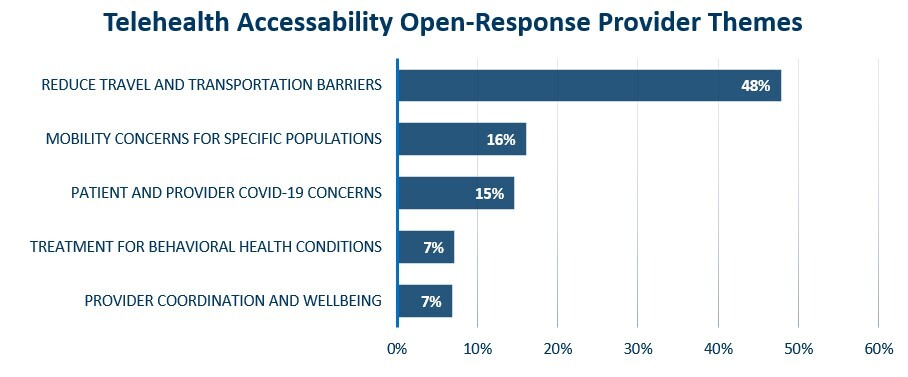|
View this as a webpage
August 2024
Telehealth Spotlight Update
Telehealth Workforce Survey Results
Telehealth transformed healthcare when the COVID-19 pandemic started. So much so, that in December 2022, we released our first Spotlight on telehealth in the Minnesota workforce and reviewed the changes (mostly increases) in telehealth utilization by profession, setting, and region. This Spotlight expands on that discussion and shares more recent provider perspectives and insights on telehealth and the healthcare workforce.
The changes in telehealth usage and the expansion of telehealth service options covered by payors that were passed by federal and state government during the pandemic were largely time-limited and assumed to be needed only for the duration of the public health emergency. The Minnesota Telehealth Act that passed in 2021 broadened the scope of telehealth services and ensured that audio-only visits were paid for just like in-person ones. Last year, the Minnesota legislature extended this coverage to June 30, 2025, and asked the Minnesota Department of Health (MDH) to examine the impact of the changes. This Spotlight shares insights from healthcare providers on how this legislation has affected telehealth accessibility and overall well-being.
In gathering data for this Spotlight, MDH used the Health Care Workforce survey, a survey of Minnesota healthcare providers that seeks details about provider demographics, patient demographics and service locations. Starting in 2021, the survey had included additional questions specific to telehealth.1 Open-ended feedback from these providers particularly focused on issues of accessibility.1,2,3
1 Calendar year 2021 refers to April-June 2021.
2 Open-answer responses were not mutually exclusive as such total percentages are not equal to 100%.
3 Surveyed providers included Physicians, Physician Assistants, Behavioral health professionals, Pharmacy professionals, and Nursing professionals.
We began our analysis by looking at how providers responded to the question:
“In your own practice, have you found that telemedicine makes health care more accessible for certain patients, or in certain situations?”
A significant portion of the providers (82%, or 7,951 respondents) agreed that telemedicine has improved access to healthcare for certain patients or in specific scenarios. About half of these respondents (4,001) provided detailed comments on their experiences. The feedback highlighted several benefits to telehealth, including:
- Reducing Travel Barriers: 48% of providers noted telehealth helps overcome issues related to travel and transportation.
- Assisting Specific Populations: 16% mentioned benefits for those with mobility issues, including the elderly, disabled, college students, and those who are homebound.
- Addressing COVID-19 Concerns: 15% found telehealth valuable during the pandemic.
- Monitoring Behavioral Health: 7% reported that telehealth is beneficial for monitoring patients with behavioral health conditions.
Providers also noted personal benefits such as better coordination of care, more flexible scheduling, and improved work-life balance.
Table 1: Percentage of provider responses that endorsed each telehealth accessibility theme.

|